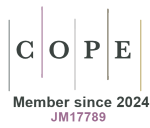Most read articles by the same author(s)
- Christian Ramos, Efreen Montaño, Alfonso Reyes-López, Fabiola Lemus, Maria Pacheco, Gabriela Hernandez, Arely Lemus, Economic evaluation of lenalidomide (Revlimid®) for the treatment of mielodysplastic syndrome with 5q deletion at low/intermediate-1 risk , Global and Regional Health Technology Assessment: Vol. 4 No. 1 (2017): January-December 2017









